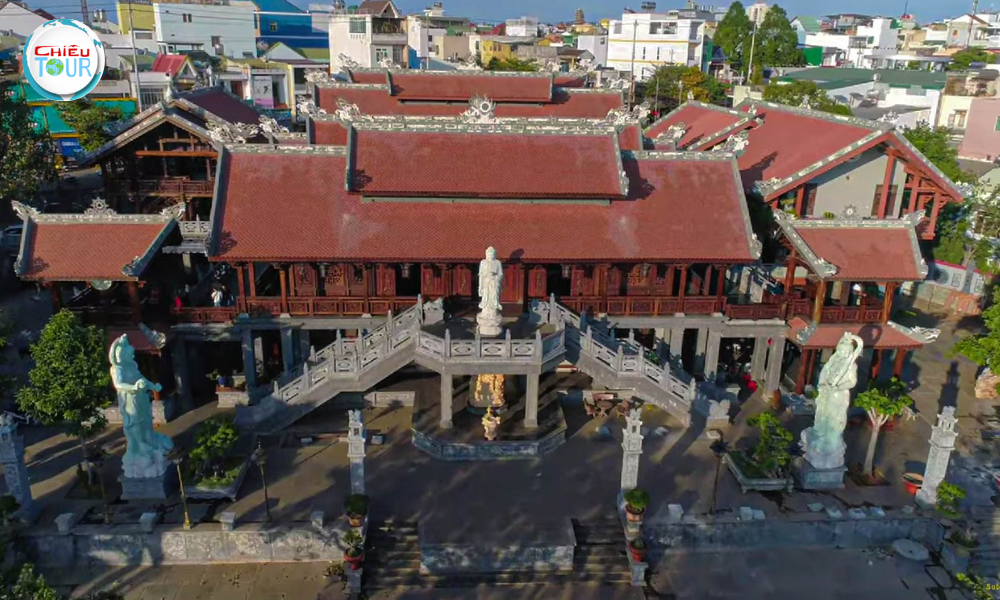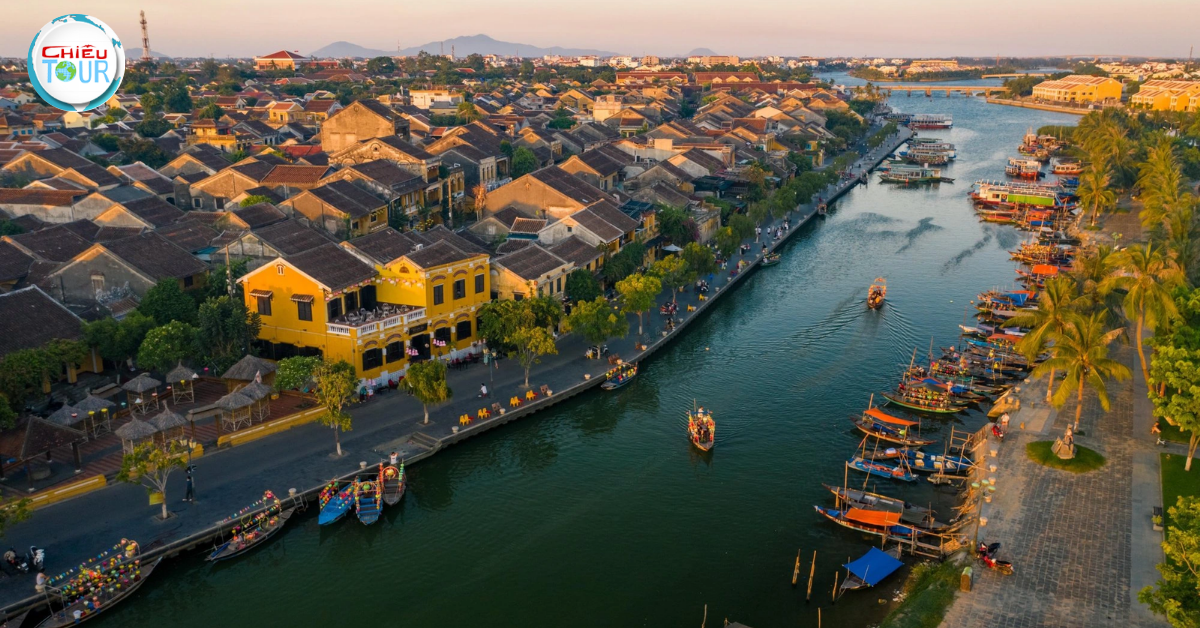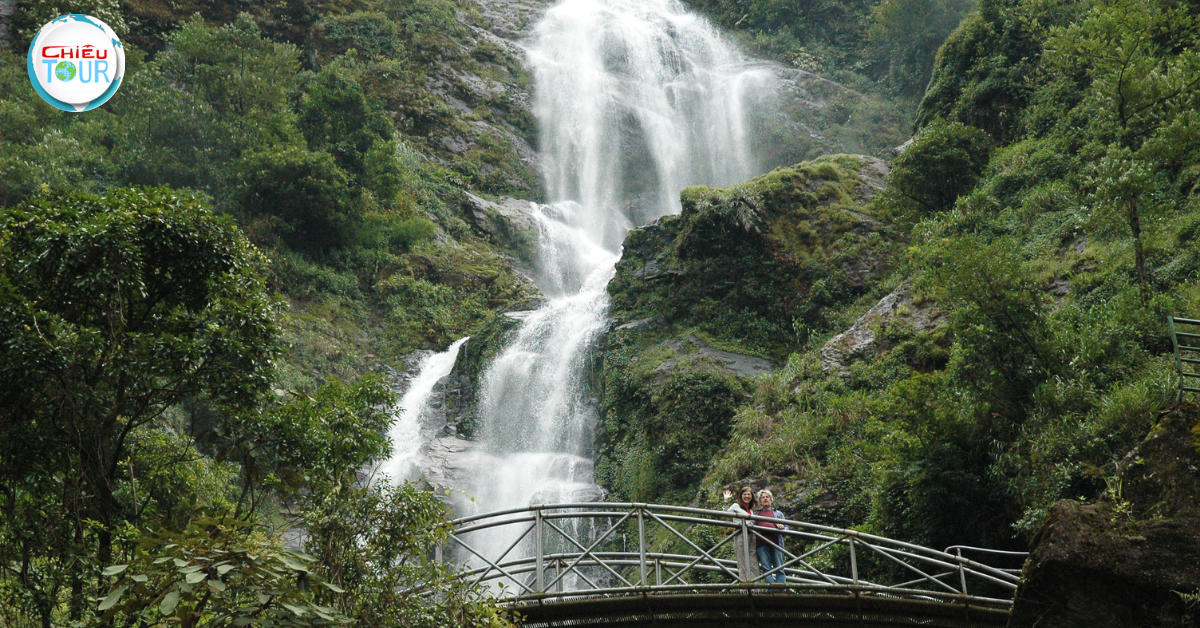Thien Mu Pagoda
- Author: Admin
- | Hot destination
Thien Mu Pagoda, a symbol of spiritual serenity and cultural significance, stands tall on the banks of the Perfume River in Hue, Vietnam. As one of the nation's most iconic landmarks, this historic structure attracts visitors with its rich history, stunning architecture, and tranquil surroundings. Steeped in legend and lore, the Thien Mu Pagoda offers an insight into the religious and cultural fabric of Vietnam, making it a must-visit destination for any traveler.
The Historical Significance of Thien Mu Pagoda
The story of Thien Mu Pagoda is as captivating as its physical presence. Originating over four centuries ago, the pagoda embodies the essence of Vietnamese Buddhism and showcases the resilience of its culture through tumultuous times.
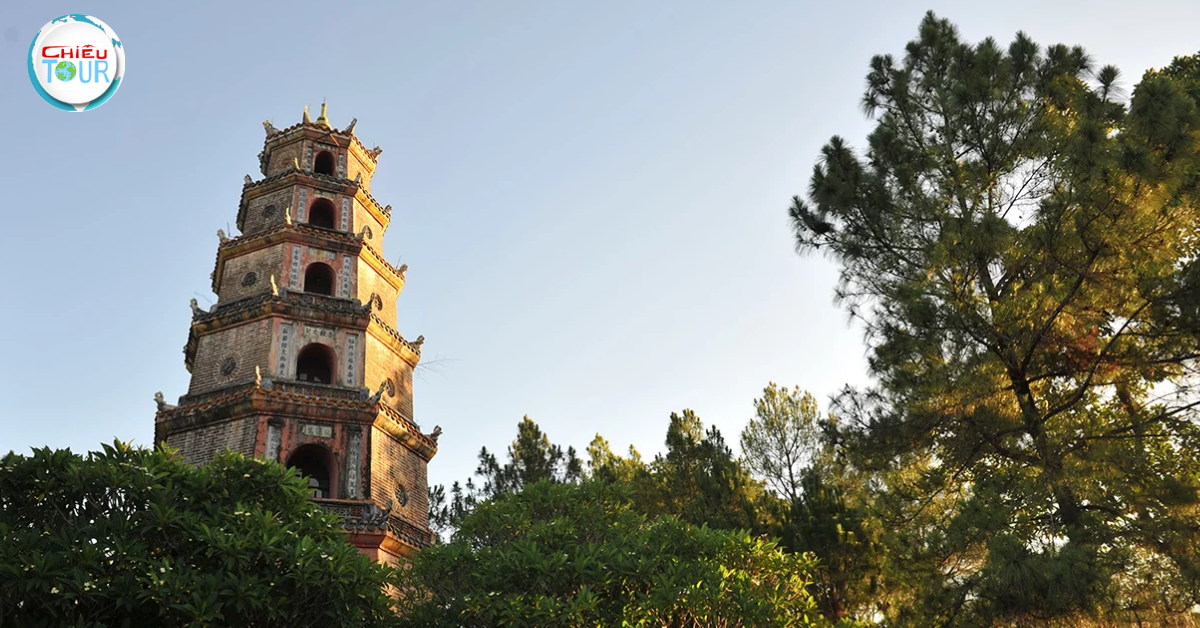
Origins and Construction
The Thien Mu Pagoda was constructed in 1601 under the reign of Lord Nguyen Hoang, who sought to establish a sacred site that would serve as a beacon of faith for the locals. The choice of location on the hills overlooking the Perfume River was no coincidence; it was believed that the spiritual energy of the area would enhance the temple's divine purpose.
Architecturally, the pagoda is a prime example of traditional Vietnamese design. The building features elaborate carvings, intricate sculptures, and vibrant colors that reflect the country's heritage. Each tier of the pagoda's seven-story tower symbolizes various aspects of Buddhist philosophy, inviting visitors to engage deeply with the teachings of Buddha as they ascend through the different levels.
In addition to its architectural beauty, the Thien Mu Pagoda has witnessed significant historical events that shaped Vietnam's trajectory. During the Vietnam War, it became a center for peaceful protests against the regime, led by Buddhist monks who sought to promote peace and harmony amidst conflict. This legacy adds depth to the pagoda’s importance, transforming it from a mere tourist attraction into a powerful symbol of resilience and hope.
Cultural and Spiritual Importance
At its core, the Thien Mu Pagoda represents more than just a physical structure; it embodies the soul of Vietnamese spirituality. The pagoda serves as a site of worship where devotees gather to pray and meditate. Its serene environment encourages reflection and connection with the divine, providing solace to those seeking tranquility amid life's chaos.
The pagoda also plays a vital role in local festivals and traditions, serving as a gathering point for community celebrations. Events such as the Buddha's Birthday and the Lantern Festival are often held here, attracting both locals and tourists alike. These gatherings foster a sense of belonging and unity, reinforcing the idea that spirituality transcends individual beliefs and brings people together.
Moreover, the stories and legends associated with the Thien Mu Pagoda have permeated Vietnamese culture. Folklore surrounding the pagoda continues to be passed down through generations, enriching the narrative of the temple and enhancing its allure. These tales not only preserve history but also inspire future generations to appreciate their cultural roots.
Architectural Marvel
One cannot discuss the Thien Mu Pagoda without marveling at its architectural brilliance. The structure's seven tiers rise majestically against the skyline, each level adorned with unique designs and symbolic elements that invite visitors to dive deeper into its meaning.
The octagonal tower, standing at a height of over twenty-one meters, is perhaps the most striking feature of the pagoda. Each floor is dedicated to a different aspect of Buddhist teachings, showcasing exquisite details, including well-crafted statues, frescoes, and inscriptions. The entire design harmoniously blends with the surrounding landscape, creating a breathtaking view that captivates anyone who lays eyes on it.
As you walk through the grounds of the Thien Mu Pagoda, you will encounter various smaller shrines and altars, each representing different deities and figures in Buddhism. These additions contribute to the overall charm of the site while also offering visitors a chance to learn about the diverse beliefs that coexist within Vietnamese Buddhism.
The use of natural materials, such as wood and stone, reflects the Vietnamese people's deep respect for nature. The pagoda appears to emerge organically from its surroundings, embodying a sense of unity between man-made structures and the environment. This emphasis on sustainability and balance resonates with contemporary ideals, showcasing how ancient traditions can continue to influence modern perspectives.
Exploring the Surroundings of Thien Mu Pagoda
The Thien Mu Pagoda is more than just a standalone monument; it is part of a larger ecosystem of cultural and historical attractions that enhance the visitor experience. The area surrounding the pagoda is filled with lush greenery, sparkling waters, and other significant sites that deserve exploration.
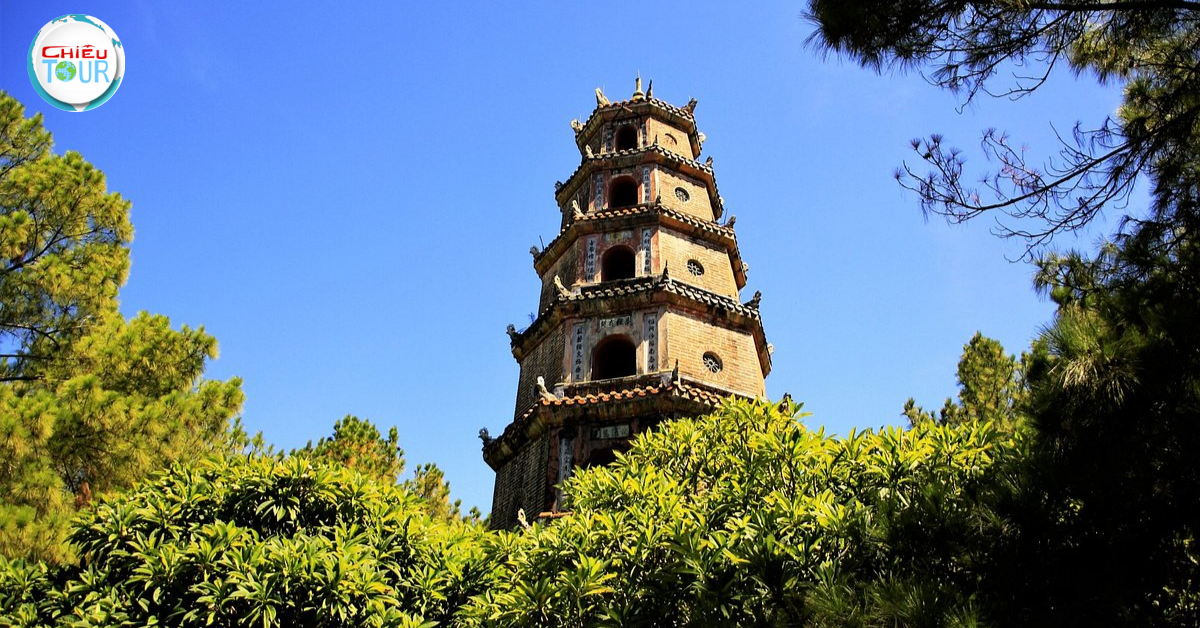
The Perfume River
One of the defining elements of the pagoda's setting is the Perfume River, which meanders gracefully past the temple grounds. This river is not only visually stunning but also holds great cultural significance. The name "Perfume River" comes from the fragrant flowers that fall into the water, creating a sweet scent that fills the air.
Visitors often choose to take boat tours along the river to experience the beauty of Thien Mu Pagoda from a different perspective. These leisurely rides provide an opportunity to soak in the serene atmosphere and witness the vibrant life along the riverbanks. Fishermen casting their nets, children playing by the shore, and lush landscapes create a picturesque scene that begs to be captured in photographs.
Moreover, the Perfume River has played a crucial role in shaping Hue's history. It served as a transportation route for goods and people, facilitating trade and commerce throughout centuries. By exploring the river, visitors gain insight into the daily lives of the locals while appreciating the natural beauty that surrounds the pagoda.
Nearby Temples and Historical Sites
In addition to the Thien Mu Pagoda, Hue is dotted with several other temples and historical sites worth visiting. One such site is the Imperial City, a UNESCO World Heritage site that served as the political and cultural center of Vietnam during the Nguyen Dynasty. The grand architecture, lush gardens, and fascinating history make it a perfect complement to a visit to the pagoda.
Another noteworthy site is the tomb of Emperor Tu Duc, set within a tranquil landscape filled with lotus ponds and towering trees. The mausoleum's harmonious design exemplifies the balance between nature and architecture, echoing the principles found in the Thien Mu Pagoda itself.
Travelers may also want to explore the myriad of local markets and eateries nearby. Sampling authentic Vietnamese cuisine and engaging with the warm hospitality of the locals create lasting memories and add depth to the overall experience.
Natural Beauty and Tranquility
The natural beauty surrounding the Thien Mu Pagoda provides a serene backdrop for contemplation and relaxation. Lush green hills, swaying palm trees, and charming pathways beckon visitors to slow down and connect with their surroundings.
Walking through the tranquil gardens, adorned with colorful flowers and intricate sculptures, allows one to escape the hustle and bustle of modern life. The gentle sounds of nature, combined with the rhythmic flow of the Perfume River, creates an ambiance of peace that is hard to replicate elsewhere.
Many visitors find themselves drawn to the pagoda during sunset, when the golden hues cast a magical glow across the landscape. This enchanting experience fosters a deeper appreciation for the beauty of both nature and human creativity, leaving a profound impact on those fortunate enough to witness it.
Visiting Thien Mu Pagoda: Tips and Recommendations
Exploring the Thien Mu Pagoda is a rewarding experience that offers visitors a glimpse into Vietnam's spiritual and cultural heritage. However, like any travel destination, planning ahead can enhance your visit and ensure that you make the most of your time there.

Best Time to Visit
Choosing the right time to visit the Thien Mu Pagoda can significantly affect your experience. Generally, the dry season, which runs from November to April, presents the best weather conditions for sightseeing. During this period, the sky is clear, and temperatures are mild, allowing for comfortable exploration of the area.
However, visiting during the rainy season can have its advantages as well. The lush greenery surrounding the pagoda becomes even more vibrant, creating a stunning visual contrast against the structure. Additionally, fewer tourists during these months can lead to a more intimate experience with the site.
Regardless of when you decide to visit, early mornings or late afternoons are ideal times to avoid crowds and enjoy the tranquil atmosphere. Watching the sunrise or sunset over the pagoda is a breathtaking spectacle that should not be missed.
Dress Code and Etiquette
As a place of worship, the Thien Mu Pagoda observes specific dress codes and etiquette that visitors should adhere to. To show respect for the spiritual significance of the site, it is advisable to wear modest clothing, covering shoulders and knees. Loose-fitting attire made from breathable fabrics is recommended, especially during warmer months.
When entering the pagoda, ensure that you remove your shoes and maintain a quiet demeanor to preserve the serene environment. It's essential to be mindful of local customs, such as refraining from taking pictures during prayer ceremonies and allowing space for worshippers.
Engaging with locals and showing interest in their practices can enrich your experience. Many are eager to share their stories and insights about the pagoda's history, fostering meaningful connections through shared conversations.
How to Get There
Reaching the Thien Mu Pagoda is relatively easy, whether you choose to travel by taxi, bicycle, or local bus. The pagoda is situated approximately five kilometers from Hue's city center, making it a short journey for most visitors. If you're feeling adventurous, consider renting a bicycle to explore the scenic countryside and embrace the local culture along the way.
Guided tours are also available for those who prefer a more structured experience. These tours often include visits to other nearby attractions, providing a comprehensive overview of Hue's historical and cultural significance.
FAQs about Thien Mu Pagoda
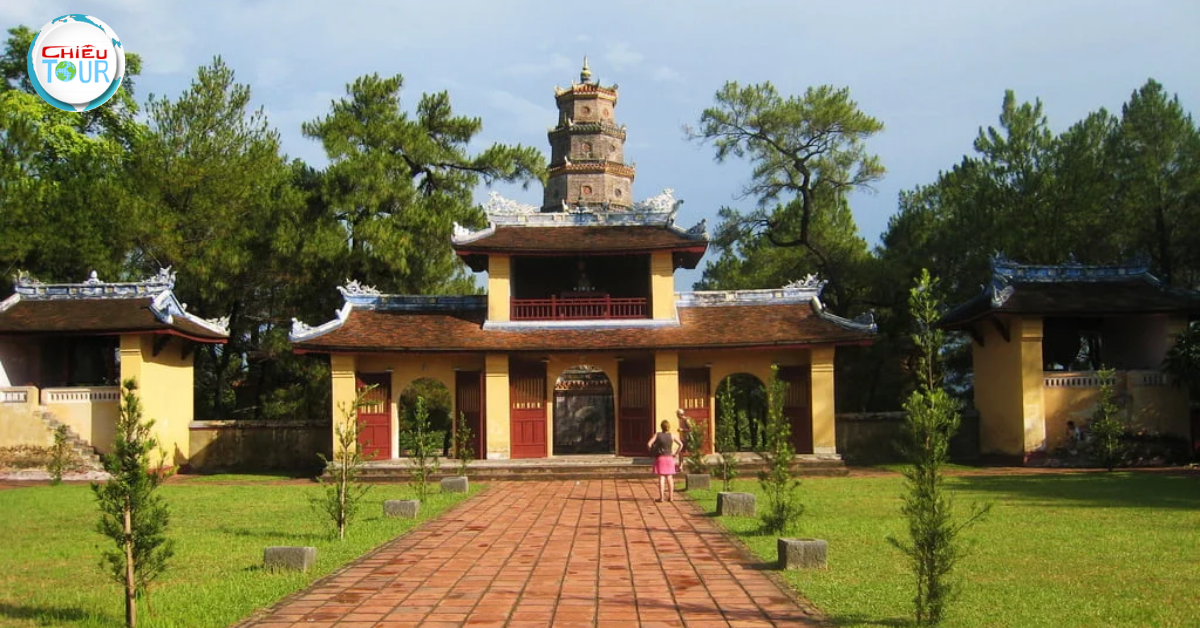
What is the best way to get to Thien Mu Pagoda?
To reach the Thien Mu Pagoda, you can opt for a taxi, a bicycle rental, or a local bus. The pagoda is located about five kilometers from Hue's city center, making it easily accessible.
Are there any entry fees to visit Thien Mu Pagoda?
Access to the Thien Mu Pagoda is free of charge, allowing visitors to explore its beautiful grounds without any admission fees. However, donations for maintenance and preservation are appreciated.
What are the opening hours for Thien Mu Pagoda?
The Thien Mu Pagoda is open year-round from early morning until evening. Early mornings and late afternoons are particularly recommended for a quieter experience.
Can I take photographs at Thien Mu Pagoda?
Yes, photography is allowed at the Thien Mu Pagoda. However, it's essential to respect areas designated for prayer and worship by refraining from taking photos during ceremonies.
Is there any significance to the number of tiers in the pagoda?
Yes, the seven tiers of the Thien Mu Pagoda symbolize various aspects of Buddhist teachings. Each level carries its own significance, inviting visitors to engage with the teachings of Buddhism as they ascend through the structure.
Conclusion
The Thien Mu Pagoda stands as a testament to Vietnam's rich spiritual and cultural heritage, inviting visitors to embark on a journey of discovery and reflection. With its enchanting architecture, serene surroundings, and profound historical significance, the pagoda offers a unique window into the heart of Vietnamese Buddhism.
As you explore the pagoda and its surroundings, you will not only witness the beauty of tradition but also appreciate the resilience and strength of a culture that has persevered through time. Whether you are drawn to its architectural marvels, tranquil atmosphere, or fascinating history, the Thien Mu Pagoda promises an unforgettable experience that lingers in your heart long after you leave.
 Vietnam
Vietnam 
